How to Grow Fennel & Have a King's Harvest at Home
Author: Jen Worst | Editor: Omar Alonso
Review & Research: Jen Worst & Chris Miller
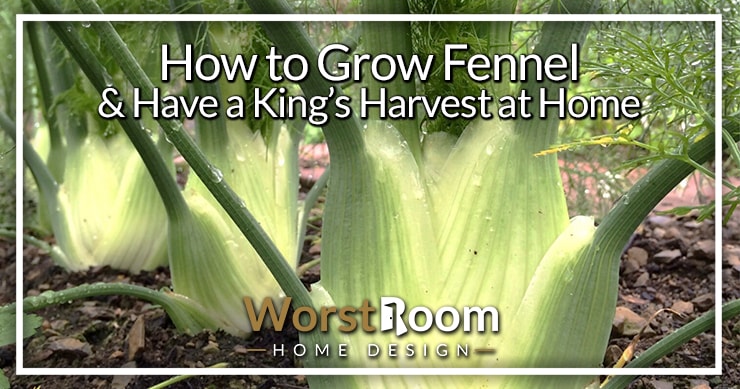
It's no wonder people want to know how to grow fennel more and more lately. It's one of the world’s healthiest foods, being chock full of many essential nutrients. It's also known for their aromatic scent.
It's a strong flavor in their leaves and fruits, almost like a light licorice flavor. Each part of the plant is edible, too. The bulb, foliage and fruits—dried and fresh—are used in many cuisines around the world.
Fennel use has been mentioned in Greek mythology. Fennel was also used by Roman warriors to increase their strength. It's a plant that has a lot of culinary, medicinal, and ornamental uses.
Fennels are part of the same plant family as parsley, but are not types of parsley, only related. They possess a mild aniseed flavor, but they are sweeter and more aromatic than anise. You probably already know this since you're here, so let's skip the chit chat
How to Grow Fennel
Fennel has been used by humans for thousands of years, as far back as ancient Egypt, ancient China, and on towards the Middle Ages. That's been for culinary uses, and even medicinal and magical purposes.
Here are thirteen things to keep in mind that will help you in growing fennel and harvest the best quality and quantity of crop.
Herb or Vegetable - Choosing Your Variety of Fennel
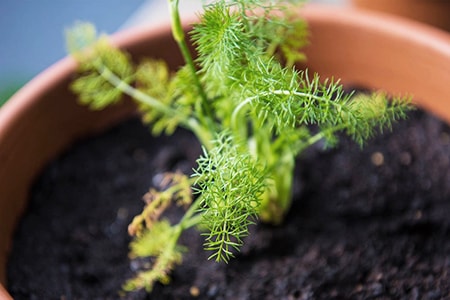
There are two major varieties of fennel to choose from—herb fennel and vegetable fennel.
The herb type is also known as sweet fennel. It's used as an herb for flavoring. It's mainly cultivated for its seeds.
The vegetable type is also known as Florence fennel or finocchio. It's a bulb-like plant with stalky and larger leaves. All parts including the bulb, stalk, and leaves are used in culinary preparations—especially in salads.
Fennel Seeds or Bulb Division - Propagating Properly
Both varieties of fennel can be grown from seeds. Using seeds is the easier option, as it also gives better results. You can soak your seeds in water for a couple of days before planting in soil, and this will make germination easier.
You can also use the root division method to propagate fennel. However, they have long taproots that aren't very suitable for being divided. So, the division method might not yield a very satisfactory result.
You can also choose to regrow fennel from the bulb. If you leave the base and a little bit of the bulb attached when cutting up fennel, you can easily propagate it in water.
Once you place the piece in water it'll grow new green shoots in a few days. Once the roots have also sprouted you can replant it in soil or continue to grow it in water.
The yield from each of these methods will, of course, be different. Growing fennel from seeds will give you higher yields.
The water propagation will give the slowest and lowest yield, as water does not contain all the nutrients needed for good plant growth, though you can use liquid nutrient solutions if you want.
Fennel Growing Conditions
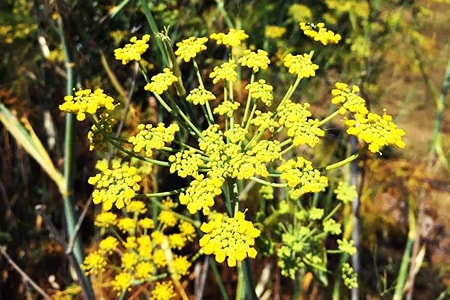
You should sow your fennel seeds in early spring or late summer for the best results. Herb fennel can be sown in spring, after the frosty season. Vegetable fennel can be grown from mid-June to July.
They prefer cool weather, but this plant can’t survive frost. At the same time, too much heat can shrivel up the bulbs. The best temperatures are from 70 to 75 degrees Fahrenheit (or 21-24 degrees Celsius).
Give Your Fennel Full Sunlight
Fennel grows best and produces a good harvest in locations that receive full sun. They prefer cool weather and grow best in places that have temperatures between 70 to 75 degrees Fahrenheit.
I repeat that because you should calculate in not only the added heat from the sun but the wind factor as well, both of which can knock you out of the desirable temperature tolerance ranges. It's not going to ruin your crop. It just won't be ideal.
Preparing the Soil for Fennel Seedlings
Fennel needs soil that is well draining and rich in organic matter. They prefer slightly acidic soil. The best pH levels are between 5.5 and 7.0. If you need to raise the level, you can use lime to do so or use a fertilizer with the right N-P-K numbers.
While herb fennel is not too picky when it comes to soil composition, the soil condition is very important for vegetable fennel. The bulbs don't grow properly in soil that isn't adequately fertilized.
There's no point in learning how to grow fennel if you aren't using the most beneficial soil makeup and nutrition. It effects your final results far more than any other factor.
Fennels like receiving light doses of nitrogen fertilizer. Take care not to overfeed as this will result in more vegetative growth than bulb growth. But some nitrogen is good, for sure.
When to Plant Fennel
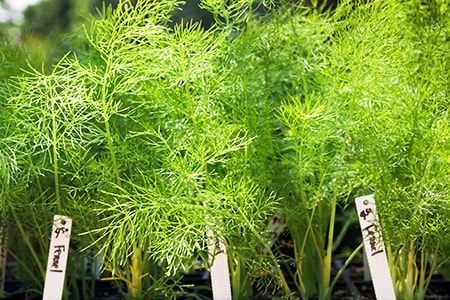
You'll want to plant your fennel in early spring or late summer, basically to dodge the extreme heat of the summer months. This will offer you an autumn harvest.
The best way to calculate an exact date is to work backwards from the first fall frost, subtracting 90 to 110 days.
Some farmers and gardeners in the northern latitudes will transplant their bulbs on the summer solstice, which offers a declining temperature afterwards but in the right tolerance ranges.
Establish a Fennel Watering Schedule
Fennel plants need at least an inch of water per week, best spread out across the week rather than once per week. If the weather is especially hot, another half an inch of water is a good idea.
Fennels thrive in moist soil. You should water your fennel plants regularly. Always keep the soil evenly moist. This will ensure better flower growth and better quality bulbs.
Avoid over-saturation and pooling of water at the base as this might cause your plant to rot. Standing water is bad, and so is soil that doesn't drain well. You'll end up with root rot.
Indoor or Outdoor Fennel Growing
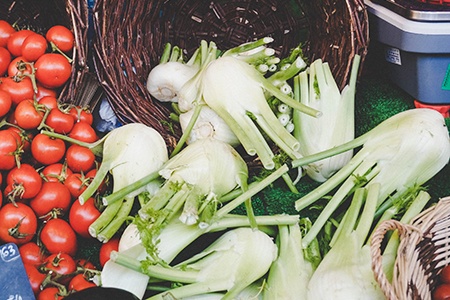
Fennel does well in gardens when they're grown directly in the soil. They need a lot of direct light, so if you are planning on growing them indoors you can place the pots on balconies and patios.
When growing fennel indoors, use big containers. They have long taproots that can grow almost a foot long, so you need a container that can comfortably accommodate these roots. Fennels planted in pots dry out faster, so they need to be watered more frequently as well.
Starting seeds indoors can speed up harvest time. You can replant the seedlings outside once the plants develop actual leaves.
How Tall Does Fennel Grow?
Herb fennel grows to be around three to six feet tall. Because of their wispy, fancy foliage, bright yellow flowers and their height, herb fennel is also grown for ornamental purposes in gardens.
The Florence fennel, on the other hand, is shorter and has broader foliage in a deeper shade of green. These are better suited to be grown indoors.
When to Harvest Fennel
Typicaly, fennel is ready to be harvested after 90 days of being planted. You can take a few leaves per day as soon as the plant is well established and healthy.
You can harvest the bulbs of the plant once it's about the size of a tennis ball or baseball.
You don't want to take too many leaves at once or you'll harm the plants health and ability to fend off pests and disease.
How to Harvest Fennel
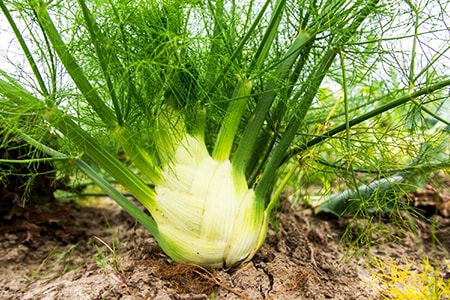
Fennels are zero-waste plants. All parts of both varieties can be utilized in different ways. Learning how to grow fennel should be concluded with learning how to use every part of it.
The bulbs of vegetable fennels are ready to be harvested when they become the size of a tennis ball, around three months after planting, sometimes up to four months.
They're harvested before the plant blooms. Once the fennel flowers, the growth of the bulb becomes stunted, so there's no point in waiting longer at that point.
You can cut off the long taproot and stalk from the bulbs and store them in a cool place for weeks. The harvested stalks can also be eaten, either raw or cooked.
Herb fennel is harvested as per need. The foliage can be cut and used whenever required. It can also be dried and stored for use later.
The flowers, fruits, and seeds can also be harvested and used as flavoring agents. The small yellow flowers—also known as fennel pollen—are the most potent as well as the most expensive form of fennel.
How to Harvest Fennel Seeds
To collect seeds from the herb fennel you have to wait for the plant to flower. Once the flowers turn brown, you can cut the plant.
Hang the plant upside down in a paper cover or bag and place it in a cool and dry place. The seeds will fall into the bag when they have dried up.
Fennels seeds can be dried and stored. They last for around three to four years if stored properly. You can use the seeds as flavoring agents or use them to start another batch of fennel plants.
Pests That Feed on Fennel
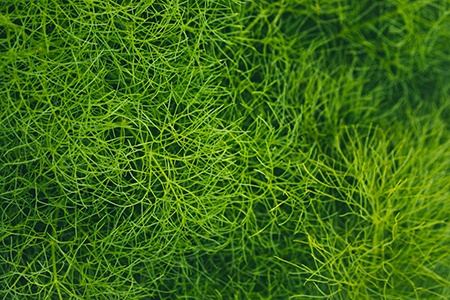
Because of their aromatic nature, fennels are not prone to a lot of insect infestations. The two main pests that you have to keep an eye out for are aphids and parsley worms. Learn how to grow fennel all you want but it won't matter if you let insects or disease ruin it.
Aphids or whiteflies are not beneficial pollinators. They suck the life out of your plants, damage the leaves and stalks and cause diseases.
You can keep out aphids by ensuring proper airflow between plants. Also, ensure that you don't overwater or underwater your fennel plants. Planting nectar-rich flowers near your fennels will attract other insects that will feed on the aphids.
Parsley worms aren't types of worms but are the caterpillar stage of the black swallowtail butterfly. These butterflies are beneficial garden pollinators. You can just let these caterpillars have a share of your fennel as they will end up being beneficial to you in the future.
That's How to Grow Fennel!
Fennel is a plant that grows perennially in Mediterranean climates. They're also quite hardy plants as they've adapted well to other climate zones, although they can’t survive in extremely frosty conditions.
In France, the emperor Charlemagne even declared fennel as an essential herb that had to be planted in every garden, because of its potential as a health supporter.
This plant will give you returns for years on end if you take care of it properly. The added advantage is that they're easy to grow. Hurry up and get planting now that you know how to grow fennel.



